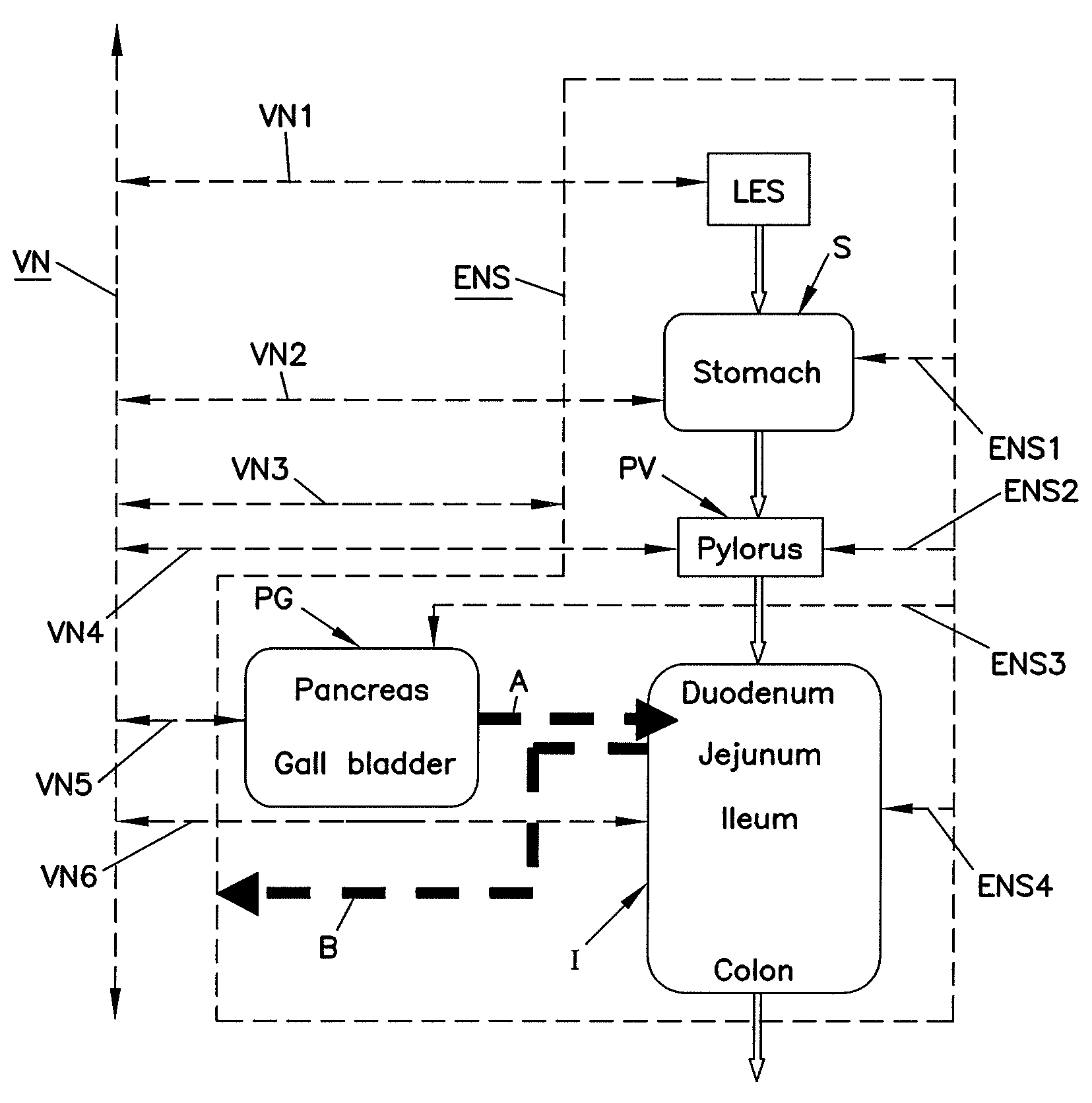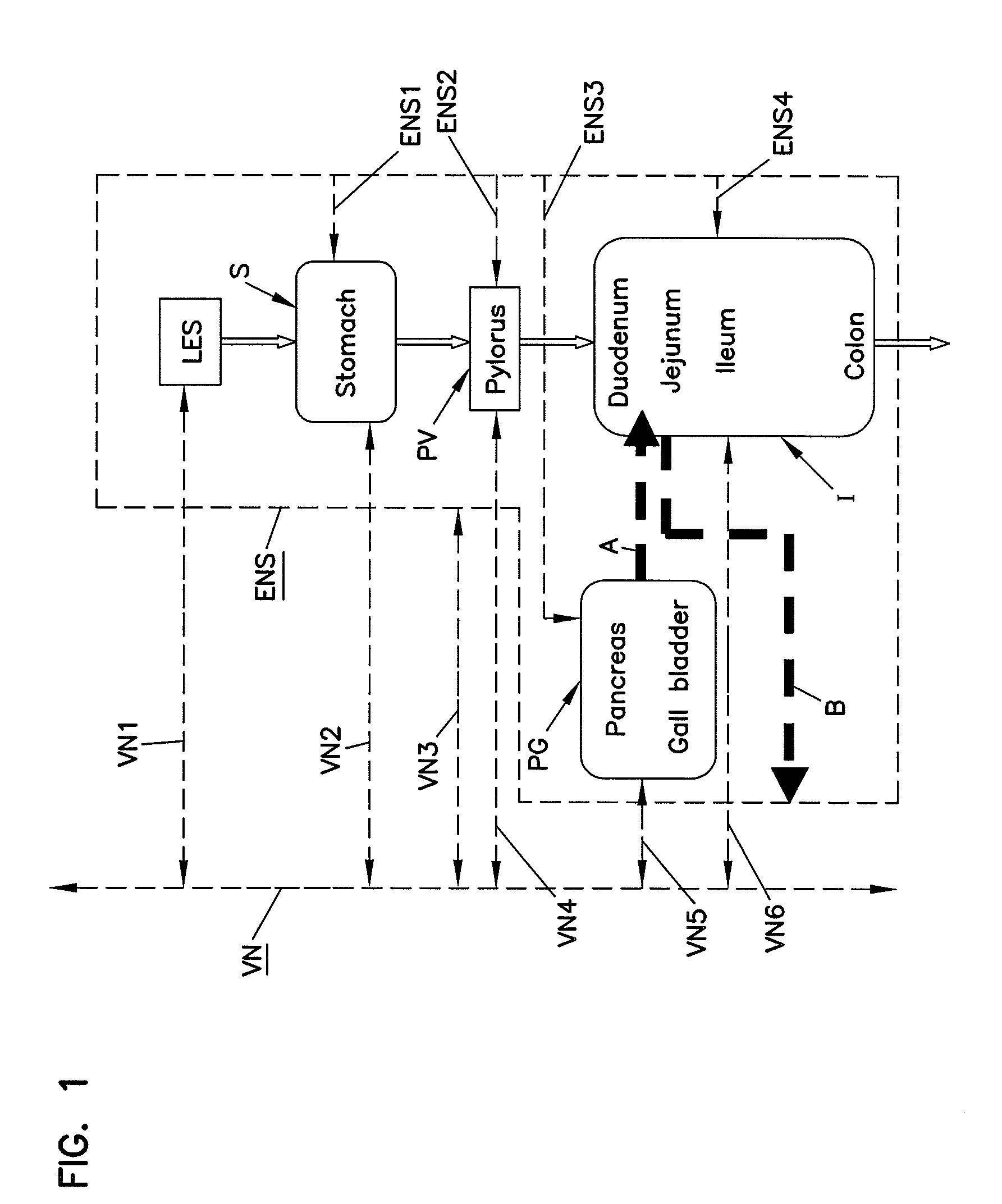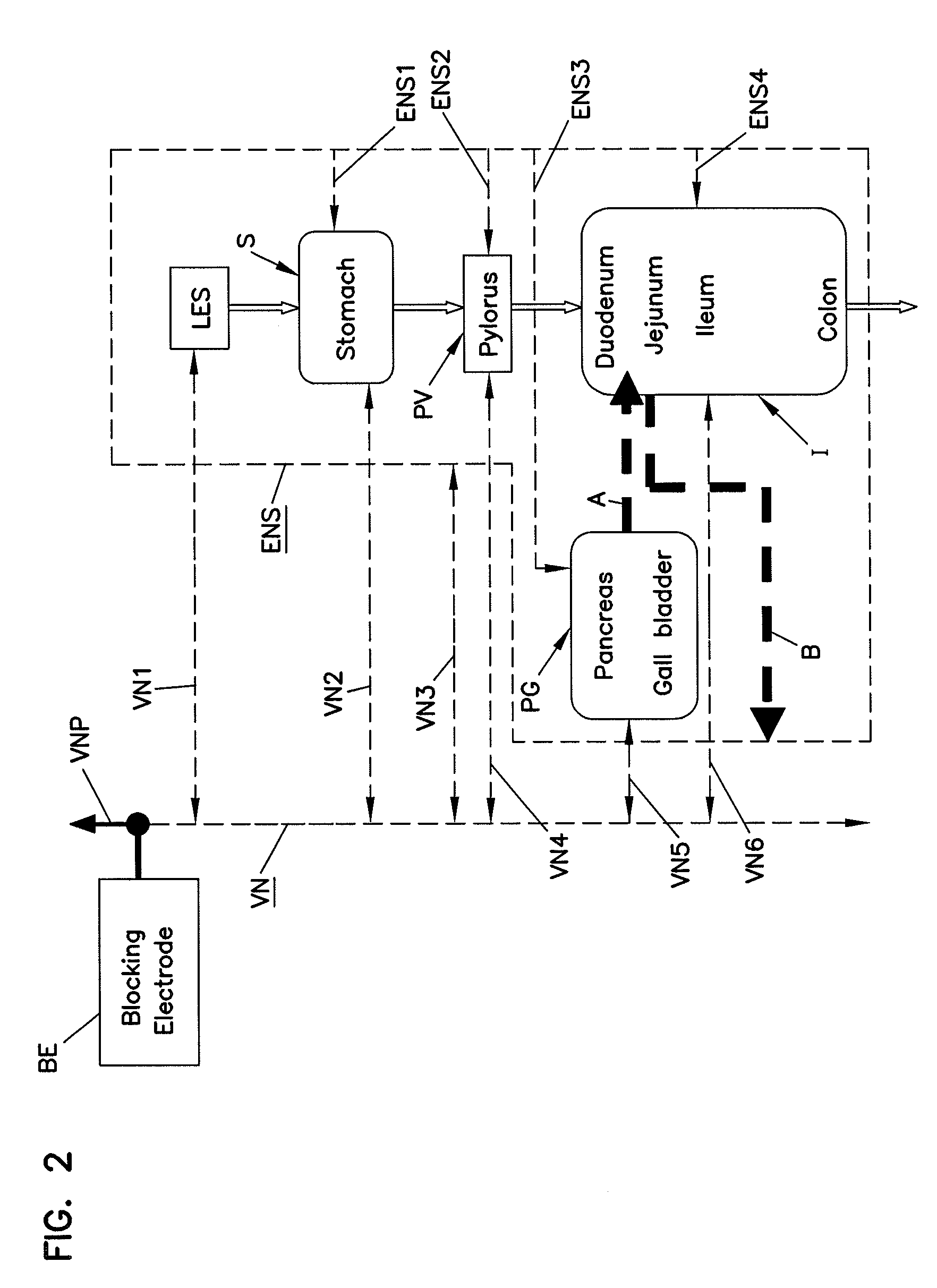Methods and systems for glucose regulation
a glucose regulation and glucose technology, applied in the field of methods and systems for glucose regulation, can solve the problems of unable to effectively use insulin, 15-32% of patients cannot maintain glycemic control with monotherapy, and the cost of 174 billion dollars for the health care system, so as to reduce hepatic glucose production, improve glycemic control, and stimulate insulin release
- Summary
- Abstract
- Description
- Claims
- Application Information
AI Technical Summary
Benefits of technology
Problems solved by technology
Method used
Image
Examples
example 1
Material and Methods / Experimental Design
[0176]An open-label, prospective, baseline-controlled, three-center clinical study was conducted to evaluate feasibility and safety and efficacy of a device as described herein that causes intermittent electrical blocking of the anterior and posterior vagal trunks. The participating centers include Flinders Medical Centre, Adelaide, Australia; Instituto National de la Nutricion (INNSZ), Mexico City, Mexico; and, St. Olavs University Hospital, Trondheim, Norway.
[0177]Patients
[0178]Male or female obese subjects (BMI 31.5-55 kg / m2) 25-60 years of age inclusive, were recruited at the three centers. The study assessed device safety and efficacy for 6 months.
[0179]Ability to complete all study visits and procedures was an eligibility requirement. Relevant exclusion criteria included: current type 1 diabetes mellitus (DM) or type 2 DM poorly controlled with oral hypoglycemic agents or with associated autonomic neuropathy, including gastroparesis; tre...
PUM
 Login to View More
Login to View More Abstract
Description
Claims
Application Information
 Login to View More
Login to View More - R&D
- Intellectual Property
- Life Sciences
- Materials
- Tech Scout
- Unparalleled Data Quality
- Higher Quality Content
- 60% Fewer Hallucinations
Browse by: Latest US Patents, China's latest patents, Technical Efficacy Thesaurus, Application Domain, Technology Topic, Popular Technical Reports.
© 2025 PatSnap. All rights reserved.Legal|Privacy policy|Modern Slavery Act Transparency Statement|Sitemap|About US| Contact US: help@patsnap.com



